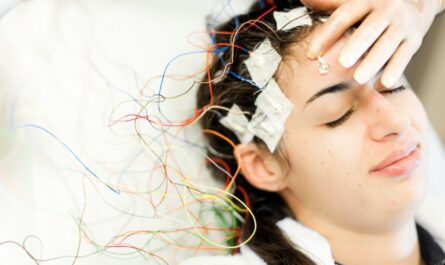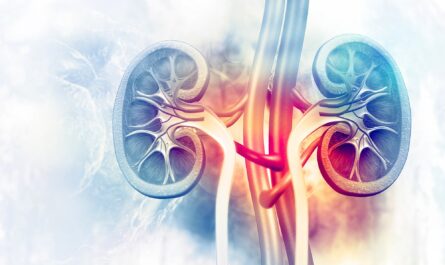
Introduction to Hospital Beds
A hospital bed is a specialized type of bed used for patients in a hospital or medical setting. The primary function of a hospital bed is to provide support and comfort to patients during medical treatment or recovery from illness or injury. Different features are included in hospital beds to meet the needs of patients requiring specialized care. The two main types of hospital beds are powered and manual. Let’s examine the key differences between these options.
Powered Hospital Beds
Powered hospital beds, also called electric hospital beds, are equipped with electric motors that allow caregivers and patients to adjust the bed’s position and height with the push of a button. Some of the core features commonly found on powered hospital beds include:
– Adjustable Height: Powered beds can be raised, lowered, or inclined to different positions electronically using handheld remotes or touchscreens. This provides flexibility to assist patients getting in and out of bed or changing positions comfortably.
– Head and Knee adjustments: Individual head and knee sections of powered beds can be adjusted up and down independently using the bed controls. This allows patients to find posture positions that relieve pressure on certain body parts.
– Built-in Scales: Many powered beds feature weighing systems integrated into the bed frame and mattress. This allows weighing patients regularly without extra handling or equipment.
– Preset Positioning: Memory buttons or pre-programmed positions allow setting favorite bed angles and retrieving them with one touch. This streamlines repositioning for better circulation or relieving pressure areas.
– Battery Backup: In case of power failures, most powered beds have internal batteries to retain bed positioning controls for a brief period.
– Safety Features: Features like bed exit monitoring, auto-stopping of movements, and adjustable speed controls enhance safety in powered beds.
Powered beds provide versatility and easy adjustability to suit patients’ changing needs and conditions. However, they also tend to be more expensive than manual beds. Regular maintenance and calibration are also required to keep powered beds functioning properly.
Manual Hospital Beds
Manual or crank-operated hospital beds use mechanical levers, cranks, or pull cords to adjust the bed’s position and angles. Though lesser advanced than powered beds, manual beds still deliver the core functions needed in a hospital setting. Some attributes of manual hospital beds include:
– Adjustable Sections: The head, knee, and potentially foot sections of manual beds can be inclined to various angles using manual levers or cranks located on the frame or rails.
– Fixed Height: Most manual beds only allow adjusting height by placing removable bed blocks under the frame legs. Full height adjustment is not possible.
– Basic Mattress: Manual beds typically use standard hospital mattresses that interface well with various patient surfaces and bed sections.
– Durable Construction: With fewer moving components, manual beds tend to be more robustly built using steel, aluminum, or combinations of other sturdy materials.
– Low Maintenance: Without electric motors or controls, manual beds have minimal servicing needs if standard checks and lubrication are followed.
– Affordability: Due to simpler mechanisms, manual hospital beds provide basic functionality at lower acquisition and lifetime ownership costs compared to powered alternatives.
While manual adjustability is less versatile than powered options, basic hospital bed functions are still delivered cost-effectively by manual designs suited for general medical settings.
Choosing Between Comparing Powered and Manual Hospital Beds
When selecting the appropriate hospital bed type for a facility, care setting or patient profile, factors to consider include:
– Patient Acuity: Higher acuity patients requiring frequent positioning may benefit more from powered beds for ease of adjustment.
– Budget: Powered beds involve greater upfront and maintenance expenses versus simpler manual options. Overall budget plays a role.
– Bed Utilization: Areas with stable long-term patients may suffice with manual beds, while high turnover units favor powered beds’ versatility.
– Specialty Needs: Certain conditions may warrant specialty features only available on powered models like scale integration or pre-programmed positions.
– Staff Assistance: Manual cranking can place physical demands on caregivers moving many patients. Powered adjustability reduces such strains.
– Regulatory Compliance: State or accreditation standards for certain bed features influence the minimum requirements that must be met.
With proper assessment of patient population factors and functional requirements, healthcare facilities can make informed choices on specifying manual or powered hospital bed models appropriately suited to their needs. Overall, both hospital bed types fill important roles when applied judiciously based on individualized demand.
In Summary, Hospital beds play a critical role in patient care, offering support, comfort, and mobility for individuals receiving medical treatment. Understanding the key differences between powered and manual hospital beds is essential for healthcare professionals and caregivers alike. While manual beds are operated manually through hand cranks or levers, powered beds feature electric motors for adjustable height, positioning, and other functions, providing greater convenience and ease of use for patients and staff.


